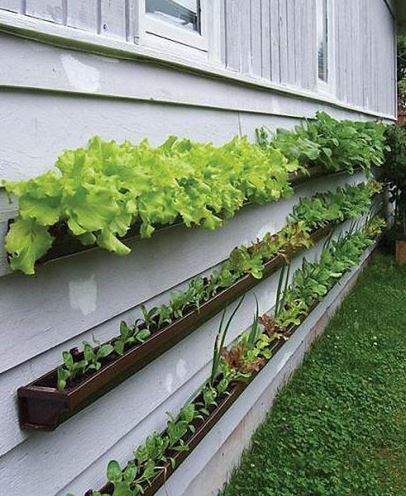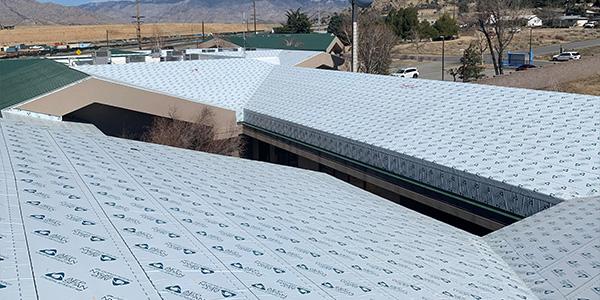Share this How-To with Your Customers So They Can Create their Own Gutter Garden

By Chelsea Welsh, Gutter Helmet.
Gutter gardens are a great way to enjoy a garden in small spaces.
If you wish you could have a garden but your landlord won’t let you dig up the grass or you don’t have a yard, consider creating a vertical gutter garden. Gutter gardens are a great way to enjoy a garden in small spaces. Gutter Helmet, the leader in gutter protection systems, brings you this how-to from their team.
Things to Know about Gutter Gardens
First of all, if you’ve never heard of, or seen, a gutter garden, it’s a garden planted in gutters hung on a fence or wall or suspended from the ceiling. If you’re considering one, you need to figure out the best location for yours. Keep these simple guidelines in mind.
Depending what you want to plant, the garden will need at least four hours of sun each day.
You will only have about five inches of soil depth, so think about planting shallow-rooted plants like salad greens, radishes, beets, marigolds, pansies and violas. Another popular option is an herb garden with cilantro, chives, basil and parsley.
The weight of the gutters filled with dirt needs to be factored in when you go to hang them. A sturdy fence or wall are options. You can also hang them from a porch ceiling on a chain or strong wire.
What You Need
Everything you need comes from your local home improvement store. Before you go, measure your space so you know how long each section of gutter can be. If you’re using a fence and want to do two or more on top of each other, know how tall what you’re planting in them will grow and keep them far enough apart. The minimum distance from the bottom of one gutter and the top of the next should be no less than a foot.
Here’s your shopping list: sectional gutters in the length you’ve determined; endcaps for each gutter; potting soil; glue for metal or plastic to firmly attach the gutter endcaps; and gutter hangers if you are affixing them to a wall or wooden fence or using another hanging method. Don’t forget your seeds or plants if you’re using starter plants.
Building Your Gutter Garden
If you’re hanging your gutter garden outside, drill a few small holes in the bottom of the gutter to allow excess water to drain. Next, attach the gutter endcaps utilizing the proper glue. Then all that’s left is to hang your gutters and fill them with dirt and plants or seeds. It’s really that simple.
Because your garden isn’t on the ground, you don’t have to worry about slugs or snails, but you’ll still want to protect your plants from winged bugs, squirrels and other rodents that can climb fences. Adding a mesh covering is one way to deter rodents, while plastic sheeting used for greenhouses can keep winged insects out.
Having a gutter garden is fun, rewarding and a great way to have fresh vegetables and herbs in a space that doesn’t allow for a garden. If you’re looking at the gutters on your home and dread the thought of cleaning them again this spring, call us at (800) 824-3772 for the best rain gutter covers from Gutter Helmet.
Editor’s note: This article first published on the Gutter Helmet blog and can be viewed here.





















Comments
Leave a Reply
Have an account? Login to leave a comment!
Sign In